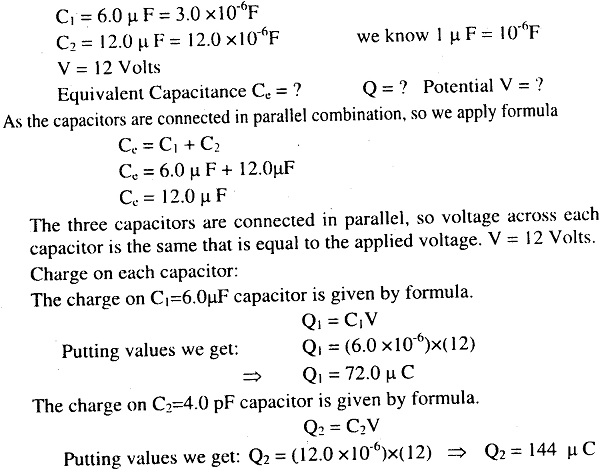Chapter 13 Electrostatics (Numerical Problems)
13.1. The charge of how many negatively charged particles would be equal to 100 µC. Assume charge on one negative particle is 1.6 × 10 C-19 ?
13.2. Two point charges q1 = 10 µC and q2 = 5 µC are placed at a distance of 150 cm. What will be the Coulomb’s force between them? Also find the direction of the force.
13.3. The force of repulsion between two identical positive charges is 0.8 N, when the charges are 0.1 m apart. Find the value of each charge.
13.4. Two charges repel each other with a force of 0.1 N when they are 5 cm apart. Find the forces between the same charges when they are 2 cm apart.
13.5. 4 The electric potential at a point in an electric field is 10 V. If a charge of +100 µC is brought from infinity to this point. What would be the amount of work done on it?
13.6. A point charge of +2 C is transferred from a point at potential 100 V to a point at potential 50 V. What would be the energy supplied by the charge?
13.7. A capacitor holds 0.06 coulombs of charge when fully charged by a 9 volt battery. Calculate capacitance of the capacitor.
13.8. A capacitor holds 0.03 coulombs of charge when fully charged by a 6 volt battery. How much voltage would be required for it to hold 2 coulombs of charge?
13.9. Two capacitors of capacitances 6 µF and 12 µF are connected in series with 12V battery. Find the equivalent capacitance of the combination. Find the charge and the potential difference across each capacitor.
13.10. Two capacitors of capacitances 6 µF and 12 µF are connected in parallel with a 12V battery. Find the equivalent capacitance of the combination. Find the charge and the potential difference across each capacitor.
13.1. The charge of how many negatively charged particles would be equal to 100 µC. Assume charge on one negative particle is 1.6 × 10 C-19 ?
Solutions: Given data:
13.2. Two point charges q1 = 10 µC and q2 = 5 µC are placed at a distance of 150 cm. What will be the Coulomb’s force between them? Also find the direction of the force.
Solution:
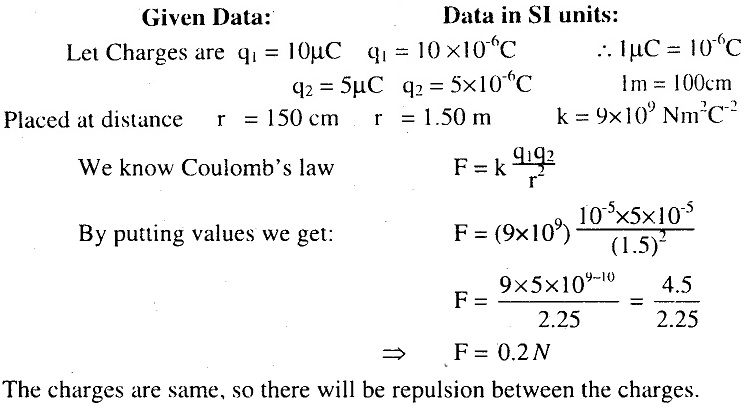
13.3. The force of repulsion between two identical positive charges is 0.8 N, when the charges are 0.1 m apart. Find the value of each charge.
Solutions:
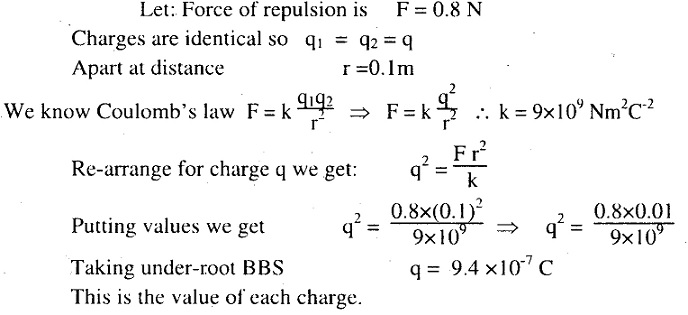
13.4. Two charges repel each other with a force of 0.1 N when they are 5 cm apart. Find the forces between the same charges when they are 2 cm apart.
Solution:
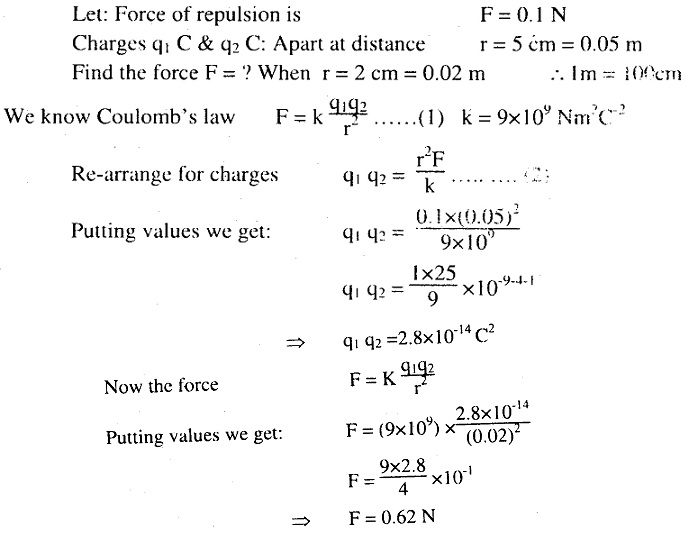
13.5. 4 The electric potential at a point in an electric field is 10 V. If a charge of +100 µC is brought from infinity to this point. What would be the amount of work done on it?
Solution: Given data in SI units:
13.6. A point charge of +2 C is transferred from a point at potential 100 V to a point at potential 50 V. What would be the energy supplied by the charge?
Solution: Given data in SI units:
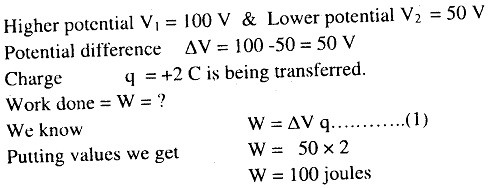
13.7. A capacitor holds 0.06 coulombs of charge when fully charged by a 9 volt battery. Calculate capacitance of the capacitor.
Solution: Given data in SI units:
Charges Q = 0.06 C
Battery V = 9 Volts
Capacitance C = ? We capacitor equation : Q = CV
C = Q/V
Putting values we get: C = 0.06/9
C = 6.67 x 10-3 F
13.8. A capacitor holds 0.03 coulombs of charge when fully charged by a 6 volt battery. How much voltage would be required for it to hold 2 coulombs of charge?
Solution: Given data in SI units:
Charge Q = 0.03 C
Battery V = 6 Volts
Voltage = ? If Q = 2C
First we find the capacitance C = ?
We capacitor equation Q = CV
C = Q/V
Putting values we get C = 0.03/6
C = 0.005 F
Now Voltage V = ? if Q = 2 using the equation Q = CV
V = Q/C
Putting values we get V = 2/0.005
V = 400 Volts
13.9. Two capacitors of capacitances 6 µF and 12 µF are connected in series with 12V battery. Find the equivalent capacitance of the combination. Find the charge and the potential difference across each capacitor.
Solutions: Given Data
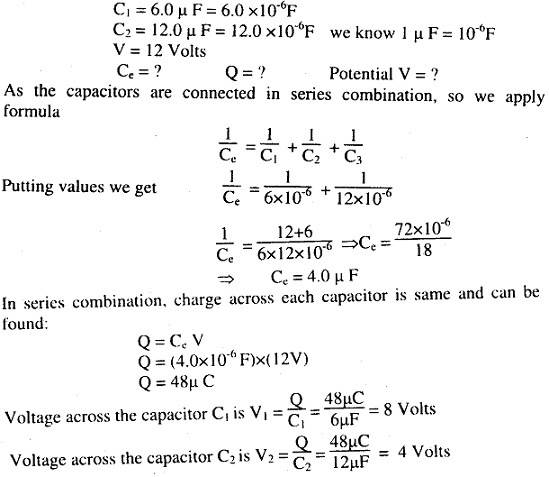
13.10. Two capacitors of capacitances 6 µF and 12 µF are connected in parallel with a 12V battery. Find the equivalent capacitance of the combination. Find the charge and the potential difference across each capacitor.
Solution: Given data
